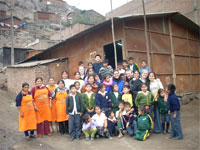A Visit to Haiti and Fonkoze by Edward Haley
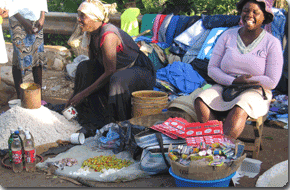
Haiti and its people are so beautiful and so poor that spending time with them breaks a visitor's heart and takes away the ability to put thoughts and feelings in perspective. Since we returned from Haiti, I have been trying to find a frame for our experiences. I'm still trying.
With the kind assistance of members of Fonkoze, a micro-finance organization started in 1995 by Father Joseph Philippe and directed by Anne Hastings, Elaine and I spent five days, in Haiti, January 13-17, 2009, traveling from Port au Prince, the capital, to Mibale and Boukan Kare in the central plateau and Fondwa in the southwest. I went in my capacity as Director of the Center for Human Rights Leadership at Claremont McKenna College, seeking to establish a connection between the Center and Fonkoze, as part of the Center's efforts to establish links with effective human rights organizations. Elaine traveled with me at our personal expense. We came away deeply moved by what we saw and profoundly impressed by the achievements of Fonkoze. Since its founding Fonkoze has grown into an organization with a national reach, amassing 50,000 depositors and thousands of Ti Marchans, small traders, 99% of whom are women, a traditional role for women in Haiti. In addition to spending several hours with Anne Hastings and traveling with three members of her staff for four days, we talked at length with Father Joseph who has launched a new initiative, aimed at creating a university geared to the needs of the majority of Haiti's people, most of whom are impoverished farmers. I've attached some pictures along with these impressions of our stay.
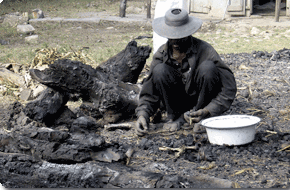
Haiti is strikingly beautiful, despite the most severe environmental degradation, partly the result of cutting and burning trees for charcoal, the sole fuel for cooking for millions of Haitians. Hillsides and mountains everywhere have been stripped of trees, leaving their stone ribs painfully evident, as gaunt and stricken as many of the farm animals one sees in the fields and alongside the roads.
Even so, there are places, such as the central plateau, where the countryside smiles under blue skies and soft, high clouds, where there are fields covered with dark green rows of okra reached by trails that wander through stands of tall millet, sugar cane, and banana trees, a countryside so carefully tended and so filled with sun as to make an American visitor think of the south of France or Tuscany. But it is the beauty of the people that resonates the most in the mind.
One remembers, too, the people and their poverty, a poverty more severe than anything we had ever seen, a poverty so deep and so punishing that it shortens the lives of Haitians at every age and puts human beings and animals in competition for enough to eat. Haitians are young: the median age is 18; and they don't live very long. Haitians can expect to live to be only 57. Infant mortality in Haiti is 620 deaths/1,000 live births far greater than the 6.3 deaths/1,000 live births in the United States or the 2.75 deaths/1,000 in Sweden. By contrast to Haitians, Americans can expect to live to be 78, and the median age in the United States is 36.
It is impossible to travel far in Haiti before paved roads turn into dirt tracks of holes and ruts that force cars and trucks to a bone jolting crawl that continues past all enduring, or, as in Port au Prince, runs into torrents of water pouring down steep side streets, collecting every form of waste, turning a major boulevard into a shallow lake where filthy water is sprayed by passing cars and small buses (Tap-Taps) onto the goods of ti marchans who have set up for market on the ground for hundreds of meters along the side of the road.
"Does all this water come from a spring or a burst water main?"
"A burst water main. It's been this way for years. No one does anything about it."
All this occurs inside the first half hour after arrival, but one quickly finds that it is repeated endlessly: the beauty of the people and the land and the depth of their poverty, the grinding, jarring, wearing cost of every movement until visitors give in and begin to know the smallest part of what it means to be Haitian.
Thanks to Fonkoze we met dozens of Haitians and saw something else, something precious and full of hope for the future. In the solidarity groups that women form to support one another as they receive small loans from Fonkoze and work to repay them, we saw pride and success shining on the faces of the members. They met us with kisses. They reported that their children were in school, and they sang and laughed. That is the other thing that we remember about our time in Haiti: the laughter of the people, in Fonkoze's meetings, on the street, in tap-taps, passing by, sardonic, sad, or teasing, sometimes just laughter.
Greer Donley '09 - Honduras
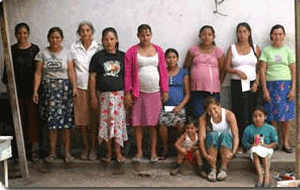
Greer used the summer of 2008 to further her goals of improving the maternal healthcare situation in Intibuca, Honduras. After spending the summer of 2007 working in the labor and delivery unit of a rural Honduran hospital, she became passionate about maternal health. She returned in 2009 to document the issues faced by these women. She spent a month walking around Honduras, working at a hospital, and learning about these women lives as she documenting their experiences. The documentary's primary aim was to aesthetically convey the human rights issues facing Honduran women each day. She has since presented her documentary to non-profits in DC and Kansas, as well as at the Oxfam Hunger Banquet and other on campus events. She hopes to use the video to fundraise for the creation of birthing clinics in rural Honduras in the future.
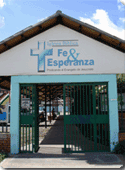
Janae Hockensmith '09 - Venzuela
In her summer, Janae was an intern at Iglesia Biblica Fe & Esperanza (IBFE), where she was primarily a teacher to young children. The church is located near Caracas Venezuela, and is involved in many outreach activities. As a teacher, she offered English classes three evenings each week with additional private tutoring sessions at various times. She was able to experiment with a variety of teaching methods including music, drama, and conversation. Through teaching, she developed relationships with many students and learned about youth experiences in the Venezuelan context. Additionally, she translated many donated teaching and outreach materials (that were in English), so that they would have a purpose in IBFE.
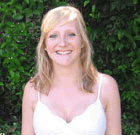
Carly Graber '11 - San Benito, Guatemala
In summer 2009, Carly interned with the non-profit organization Hands in Action. Located in San Benito, Guatemala, this organization supports and empowers victims of domestic violence and economic instability, mainly single mothers and their children. Hands in Action is run by local residents and consists of a day care center, training center, medical clinic, and a scholarship fund. Carly's primary responsibilities included teaching basic English and working with children in the day care. This opportunity expanded her previous experience as a Jumpstart Corps Member, where she was trained in literacy techniques and to work with underprivileged children whose first language is not English. In addition, Carly worked in the Hands in Action training center, teaching single mothers new skills and assisting with fundraising projects.
Update From Carly Out In The Field
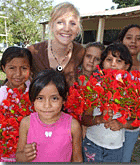
I’ll start with Hands in Action. We accomplished a lot this week! Maria, Maria Luisa and I (with some help from Maria Luisa’s boys and her daughter, Greilin, as our designated photographer) built our own whiteboard for the after-school program. It cost us about half as much as buying one would have and we did quite an excellent job. I have started letting the kids take pictures, and they get a huge kick out of it – and they love seeing the pictures after they’re taken. Greilin has especially taken to photography – she has a whole series of “garden” pictures – a lot of the pictures are of weeds but I love how she still can find the beauty in them.
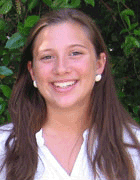
Kathryn Leonnig '12 - Riobamba, Ecuador
Over the summer of 2009, Kathryn traveled to Riobamba, Ecuador, to participate in an internship funded by The Center's Human Rights Fellowship Program. She worked at the Hospital Andino Alternativo, the first alternative medicine hospital founded in Ecuador. Kathryn's interest lies in the public health focus of the hospital, so she partnered with schools and communities in the area to promote health education, facilitate vaccination campaigns, and provide home visits to patients who need continuing care.
Update from Kathryn
I am working with the community health group and we have traveled to four communities which are far from the city and are primarily indigenous. We visited a day care center and taught the teachers about AH1N1 flu, how it is spread, the symptoms, how to wash your hands properly to avoid contamination, and what to do if someone in the community contracts the virus. We went to another community and taught about family planning and then took questions from the community members. Next week we will return and have discussion about nutrition. We are preparing informational posters and handouts for a fair that will be held in a couple of weeks.
Update from Grace Michel '05 - Lima, Peru
I am writing you from Lima, Peru. I have been living here for over a year now, working with an NGO called Peace and Hope that is focused on human rights, justice, and sustainable development for poor and marginalized communities. I love my work here and have had such a rich experience this past year. Living in a different culture constantly challenges me, which is what enables me to continually grow and step outside my comfort zone. I live and work in a district of the capital city of Lima called San Juan de Lurigancho. It is the largest district in the city and also the poorest district, with the largest concentration of people who have migrated to Lima from the provinces, many to escape the political violence during the years when the Shining Path and MRTA terrorist groups were active here (1980-2000). Many of them live in slum communities and situations of extreme poverty.
The project I am working on is mostly capacity building, focused on empowering leaders from local churches to serve their communities in holistic ways that address the major issues and needs in the communities. We focus a lot on addressing domestic and sexual abuse of women and children and promoting gender equality. We also train people with the knowledge to design small community development projects which range from educational and nutrition programs for kids to job skills and projects for adults. Aside from my work with the churches I also help out in the other projects that my NGO is working on when I have time, and one of those is a project to follow up with the implementation of the recommendation of the Peruvian Truth and Reconciliation Commission which was established to address the violations that occurred during the years of political violence and terrorism in Peru. We do advocacy work on behalf of the communities of persons displaced by the political violence. I really enjoy when I get to help with this project, since my senior thesis was on Truth and Reconciliation Commissions after periods of gross human rights abuse and I am particularly interested in this topic. I get to be a part of the process of trying to pursue reconciliation in the wake of political violence.
I took this picture with children and mothers at a local church that has a feeding program for kids, providing nutritious meals and lessons for the kids, and workshops for parents on topics of nutrition, health, and sexual abuse prevention. I have done some capacity building and training of the young people that run this program.

